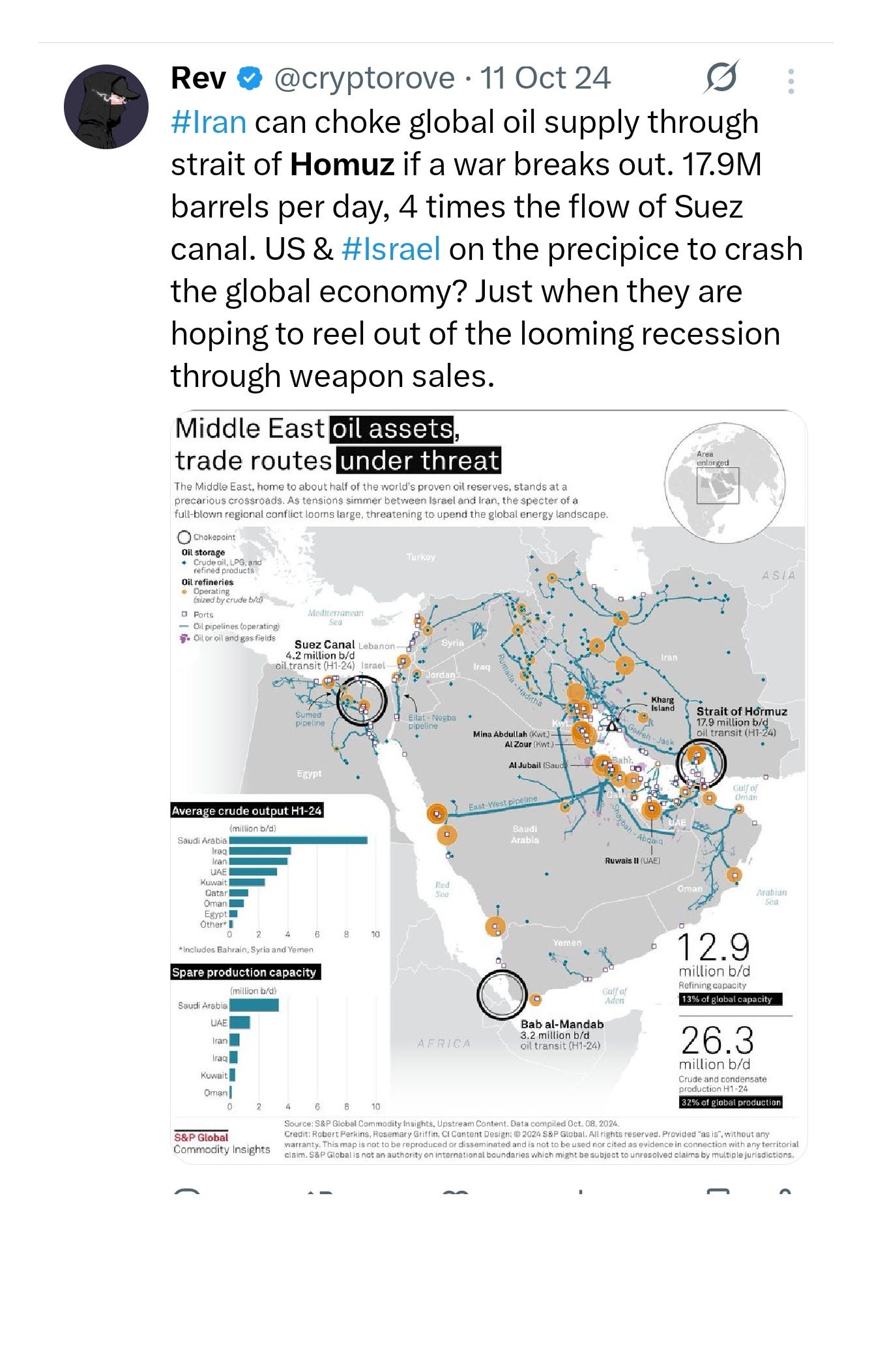The last 48 hours have seen a rapid escalation on several fronts. In the Persian Gulf, U.S. forces evacuated their bases near the Strait of Hormuz. Satellite images show the largest U.S. airbase in the region completely deserted. According to reports, the evacuation included all ships, personnel, equipment, and air defense systems. The move comes amid growing tension with Iran, where the former Iranian Minister of Economy called on Tehran to close the Strait of Hormuz for 100 days, although no official closure has been confirmed. The U.S. military has redeployed assets south of Iran, bringing in additional air carriers, tankers, and aircraft. Some analysts believe this repositioning signals preparation for possible joint operations with Israel later in the week.
At the same time, the U.S. issued a direct ultimatum to Iran, demanding unconditional surrender and a halt to its nuclear program. President Donald Trump made it clear that Washington is not interested in ceasefires, only total victory. Iran responded by rejecting the proposal outright. Iranian officials stated clearly that they will not capitulate and warned that any American military action will have serious consequences. Supreme Leader Khamenei reaffirmed that Iran will never surrender. Reports also confirmed continued Israeli strikes on Iranian territory, targeting military and nuclear-related facilities. Video and photographic evidence show widespread damage from these attacks, with particular focus on drone factories and missile production sites.
Iran responded with missile attacks of its own. Several waves of Iranian missile launches were reported, with some targeting central Israel, including Tel Aviv. Israel’s Iron Dome system intercepted many of the incoming missiles, but not all were stopped. Some caused visible damage, including the near-destruction of a high-rise building. Iranian media claimed one of the missiles used was the long-range two-stage Sejjil, capable of reentry speeds above 4,000 kilometers per hour. Reports vary on the outcome of this strike. Some sources suggest the missile was intercepted by Israeli defenses. Others claim Iran self-destructed the missile to prevent technology capture.
(Bombastic Trump on Fox News)
Vladimir Putin made a number of public statements during this period. He said Iran has not asked Russia for military support but emphasized that Moscow had offered help in the past, particularly regarding air defense systems. Putin stated that most of Iran’s underground nuclear facilities remain untouched and that there are many more such sites across the country. His comments suggest any Israeli or U.S. plan to destroy Iran’s nuclear infrastructure is far from complete. Putin also confirmed Russia’s willingness to assist Iran if the situation changes, but such a move would likely damage Moscow’s relations with both Israel and the U.S.
On Ukraine, Putin reaffirmed Russia’s position. He said that Moscow remains open to negotiations, including a possible meeting with President Zelensky, but questioned who would legally sign any agreement on behalf of Kyiv. The Russian position is that Zelensky’s regime lacks legitimacy and that any settlement must account for the rights of populations in Russian-controlled areas. Moscow has already returned thousands of Ukrainian military bodies and offered to return more. At the same time, Ukraine passed a new law stripping citizenship from Ukrainians who support or fight alongside Russia, potentially excluding millions of people from the upcoming presidential elections. Russia has said it will not accept any outcome that ignores those populations.
(Russia will not take full control of Ukraine - Putin)
In the Donbas, Russian forces made gains. Over the past few days, they secured key villages, including Stupochki, and advanced along the Seversky Donetsk–Donbass canal. Mapping data and verified videos indicate Russia has finished the first phase of its offensive in the region. They now control the central and southern parts of the battle zone and have begun the next stage targeting Bilohrivka and Oleksandro-Shultine. Russian troops entered Oleksandro-Shultine from the south and seized several buildings, placing Ukrainian troops in a state of operational encirclement. Ukrainian forces in the area now face major supply and evacuation challenges, with all roads under Russian control or surveillance.
Further south, Russian forces tightened their hold around another Ukrainian pocket. Combat footage confirmed they are targeting Ukrainian evacuation routes. Drones and guided munitions were used to strike retreating Ukrainian forces. Ukrainian marine units attempted resistance but were pushed back. Russia’s strategy now appears focused on isolating remaining Ukrainian troops and forcing surrender or destruction in place. Based on current trends, complete encirclement is likely within days.
(Erin Burnett reporting)
In short, the last two days brought major changes across multiple regions. U.S.–Iran tensions rose sharply, with active military posturing and threats exchanged. Israel’s ongoing strikes on Iran prompted direct missile retaliation. Russia moved closer to offering support to Iran if necessary. Meanwhile, in Ukraine, Russian forces advanced on the ground while political and legal frameworks in Kyiv shifted in ways that Moscow is unlikely to accept. All of this points to growing pressure points in multiple theaters with no clear path to de-escalation in sight.
(LBC UK, a rare occassion of the truth on LBC)
If you think my voice should be heard louder then PLEASE support by becoming a PAID SUBSCRIBER. I’m here for your raw, straight, and dedicated analyses. Your support is appreciated. Thank you.
buymeacoffee.com/ggtv











Share this post